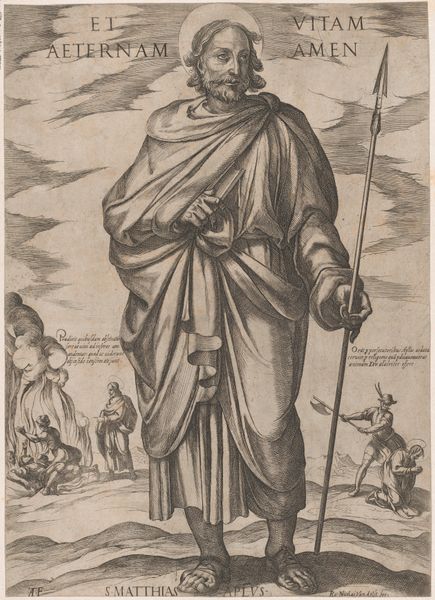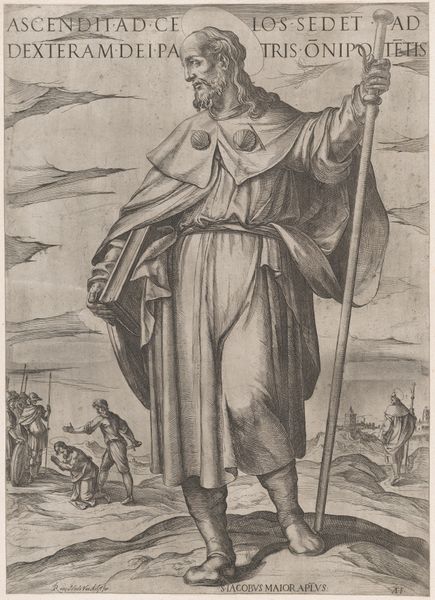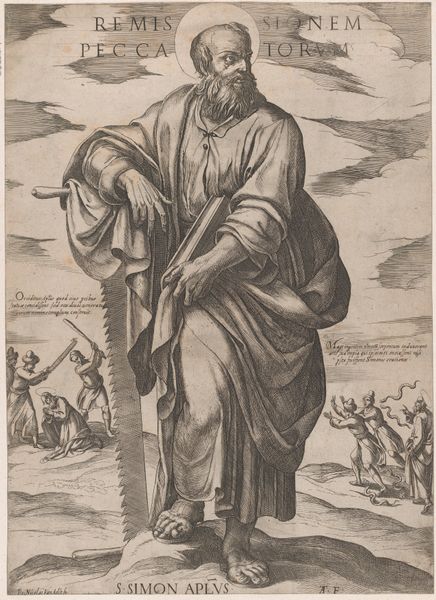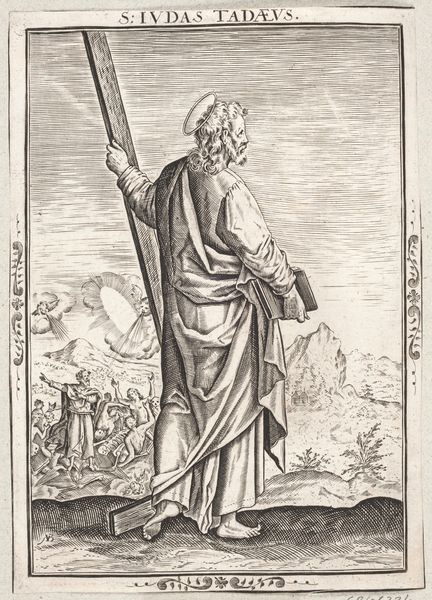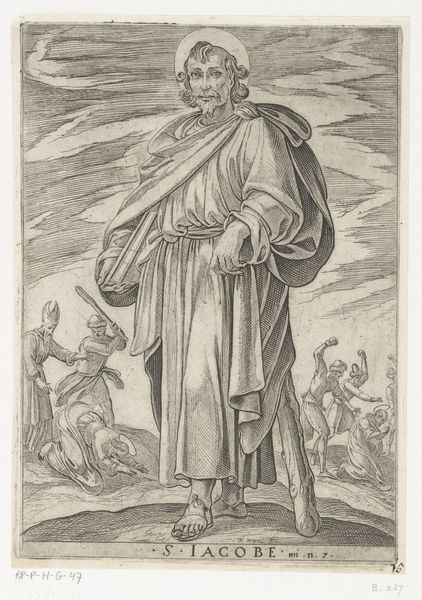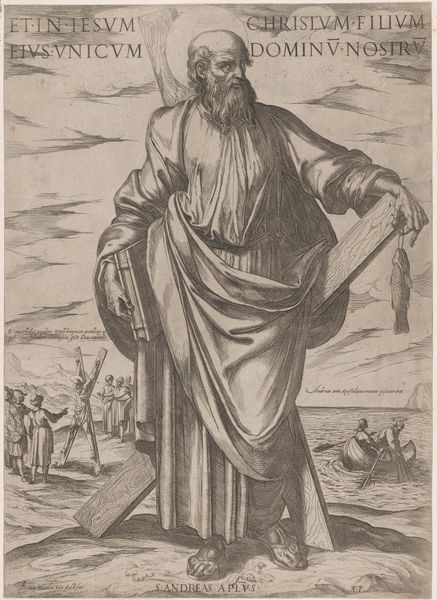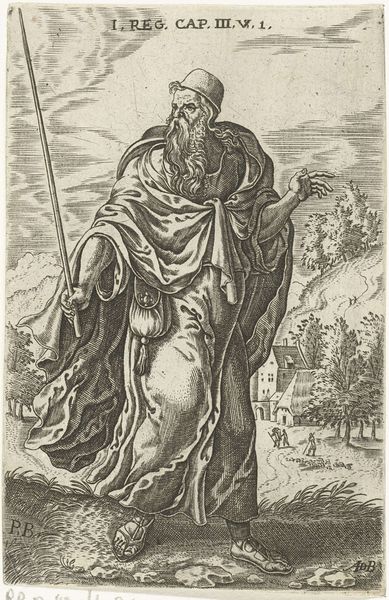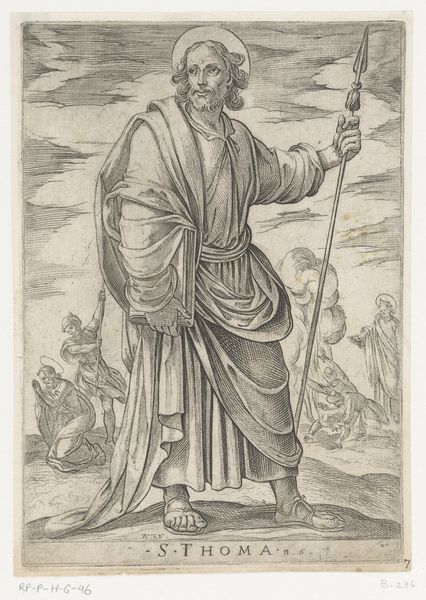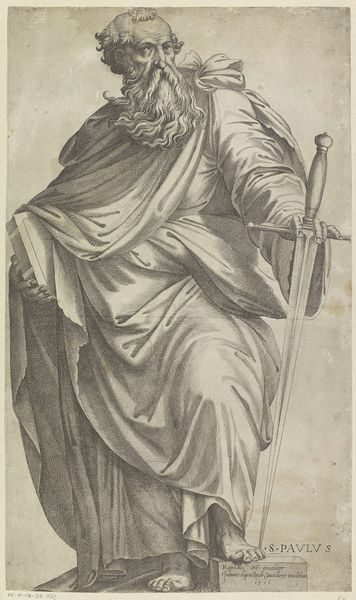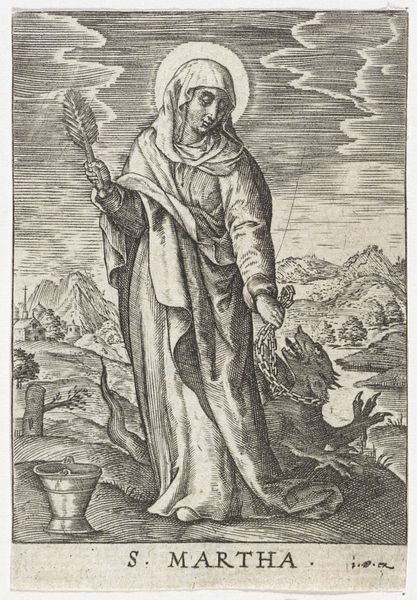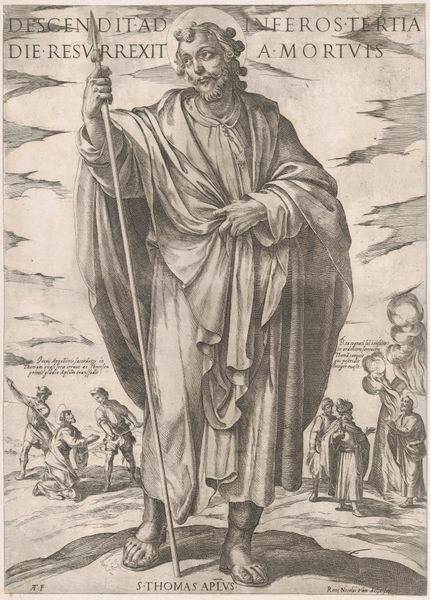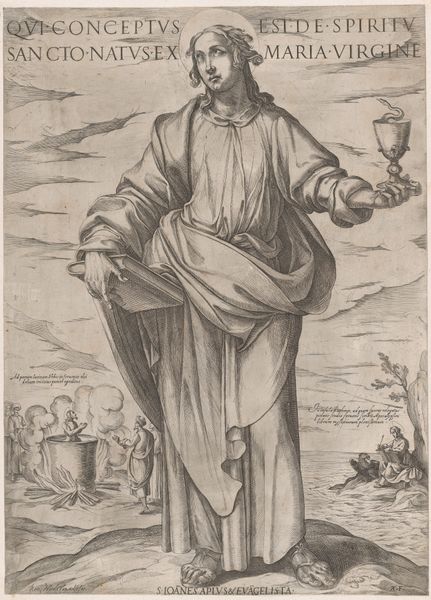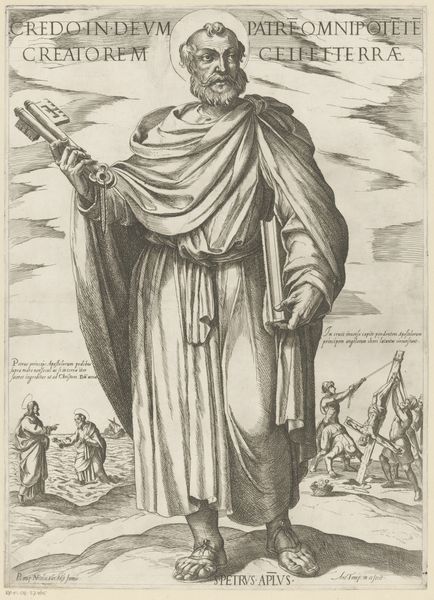
St. Philip, from 'Christ, Mary and the Apostles' 1585 - 1615
0:00
0:00
drawing, print, engraving
#
drawing
# print
#
caricature
#
mannerism
#
portrait drawing
#
history-painting
#
engraving
Dimensions: Sheet: 20 1/2 × 14 9/16 in. (52 × 37 cm)
Copyright: Public Domain
Antonio Tempesta created this print of St. Philip around the turn of the 17th century, using the technique of etching. This process involves drawing into a prepared ground on a metal plate, then submerging the plate in acid. The acid bites into the exposed lines, which are then inked and printed. Look closely, and you’ll notice how the etched lines define the form of St. Philip, from the folds of his drapery to the determined expression on his face. See how the varying depths and densities of the lines create a sense of light and shadow, lending volume to the figure. But etching wasn’t just a technique; it was also a means of production, a way to create multiples and disseminate images widely in early modern Europe. It was an efficient process, allowing artists like Tempesta to produce prints in quantity, catering to a growing market for religious imagery. These prints were accessible to a wide audience, playing a role in shaping popular piety and devotion.
Comments
No comments
Be the first to comment and join the conversation on the ultimate creative platform.
